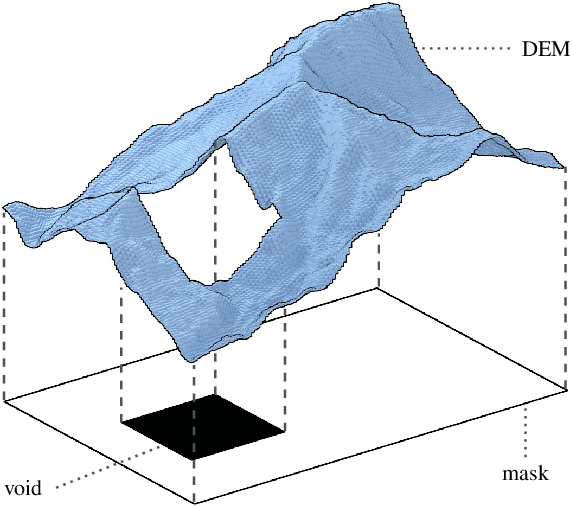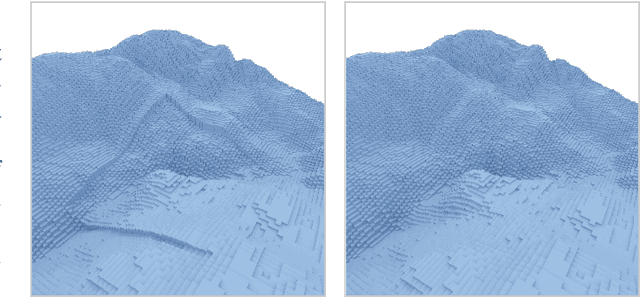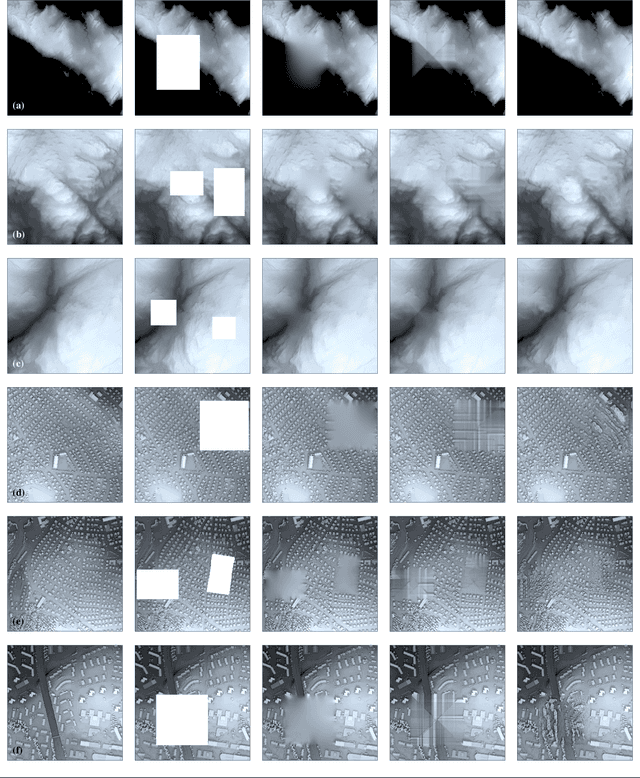Oliver J. D. Barrowclough
Binary segmentation of medical images using implicit spline representations and deep learning
Feb 25, 2021



Abstract:We propose a novel approach to image segmentation based on combining implicit spline representations with deep convolutional neural networks. This is done by predicting the control points of a bivariate spline function whose zero-set represents the segmentation boundary. We adapt several existing neural network architectures and design novel loss functions that are tailored towards providing implicit spline curve approximations. The method is evaluated on a congenital heart disease computed tomography medical imaging dataset. Experiments are carried out by measuring performance in various standard metrics for different networks and loss functions. We determine that splines of bidegree $(1,1)$ with $128\times128$ coefficient resolution performed optimally for $512\times 512$ resolution CT images. For our best network, we achieve an average volumetric test Dice score of almost 92%, which reaches the state of the art for this congenital heart disease dataset.
Real-time processing of high resolution video and 3D model-based tracking in remote tower operations
Oct 08, 2019



Abstract:High quality video data is a core component in emerging remote tower operations as it inherently contains a huge amount of information on which an air traffic controller can base decisions. Various digital technologies also have the potential to exploit this data to bring enhancements, including tracking ground movements by relating events in the video view to their positions in 3D space. The total resolution of remote tower setups with multiple cameras often exceeds 25 million RGB pixels and is captured at 30 frames per second or more. It is thus a challenge to efficiently process all the data in such a way as to provide relevant real-time enhancements to the controller. In this paper we discuss how a number of improvements can be implemented efficiently on a single workstation by decoupling processes and utilizing hardware for parallel computing. We also highlight how decoupling the processes in this way increases resilience of the software solution in the sense that failure of a single component does not impair the function of the other components.
Void Filling of Digital Elevation Models with Deep Generative Models
Nov 30, 2018



Abstract:In recent years, advances in machine learning algorithms, cheap computational resources, and the availability of big data have spurred the deep learning revolution in various application domains. In particular, supervised learning techniques in image analysis have led to superhuman performance in various tasks, such as classification, localization, and segmentation, while unsupervised learning techniques based on increasingly advanced generative models have been applied to generate high-resolution synthetic images indistinguishable from real images. In this paper we consider a state-of-the-art machine learning model for image inpainting, namely a Wasserstein Generative Adversarial Network based on a fully convolutional architecture with a contextual attention mechanism. We show that this model can successfully be transferred to the setting of digital elevation models (DEMs) for the purpose of generating semantically plausible data for filling voids. Training, testing and experimentation is done on GeoTIFF data from various regions in Norway, made openly available by the Norwegian Mapping Authority.
Reverse engineering of CAD models via clustering and approximate implicitization
Oct 17, 2018



Abstract:In applications like computer aided design, geometric models are often represented numerically as polynomial splines or NURBS, even when they originate from primitive geometry. For purposes such as redesign and isogeometric analysis, it is of interest to extract information about the underlying geometry through reverse engineering. In this work we develop a novel method to determine these primitive shapes by combining clustering analysis with approximate implicitization. The proposed method is automatic and can recover algebraic hypersurfaces of any degree in any dimension. In exact arithmetic, the algorithm returns exact results. All the required parameters, such as the implicit degree of the patches and the number of clusters of the model, are inferred using numerical approaches in order to obtain an algorithm that requires as little manual input as possible. The effectiveness, efficiency and robustness of the method are shown both in a theoretical analysis and in numerical examples implemented in Python.
 Add to Chrome
Add to Chrome Add to Firefox
Add to Firefox Add to Edge
Add to Edge